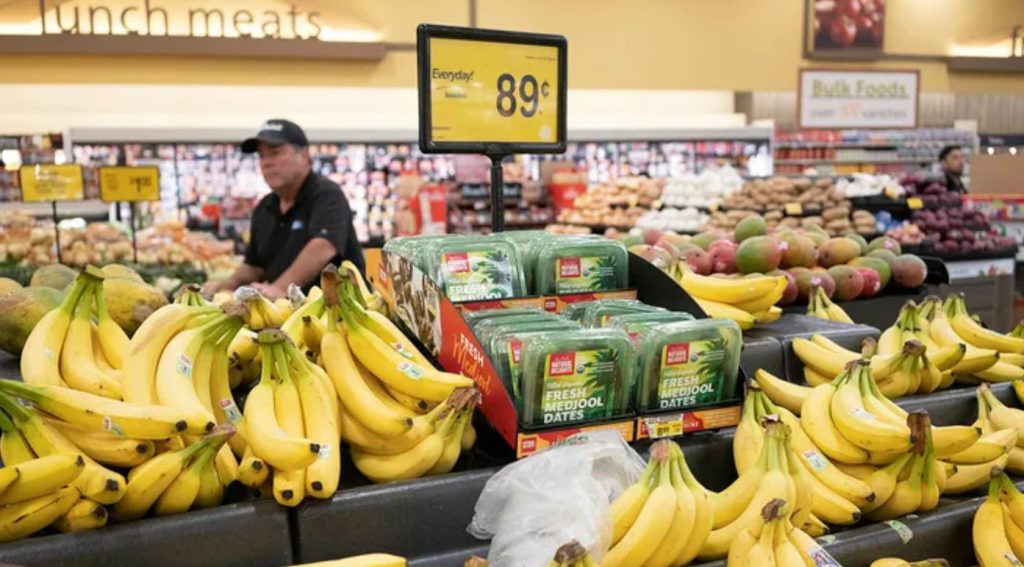
The cooler-than-expected July inflation data fueled hopes that consumer prices peaked earlier this summer after a year of relentless increases that crushed Americans, created a political firestorm for President Biden and forced the Federal Reserve to hike interest rates at the fastest pace in decades.
The consumer price index climbed 8.5% in July from the previous year, a bigger drop from the 9.1% recorded in June than economists projected. On a monthly basis, the index did not move at all as decreases in the cost of oil, gasoline and airfares offset increases in food and rent.
When excluding more volatile measurements of food and gasoline, prices jumped 5.9% in July, matching the previous month.
While the slowdown is likely a welcome respite for the Fed as it tries to wrestle inflation under control, experts cautioned that inflation remains painfully high and could be slow to return to pre-pandemic levels around 2%.
“We’re not out of the woods by a long shot,” said Peter Earle, a research fellow at the nonprofit think tank the American Institute for Economic Research. “There’s a long way to go, and a lot can happen before we get back down to that 1.5% to 2.5% annual inflation area that Americans are used to.”
Whether inflation has truly peaked remains deeply uncertain, particularly as COVID-19 and the Russian war in Ukraine continue to disrupt the global economy. Economists have previously predicted that the inflation wave crested, only to be proven wrong the following month.
Still, the expectation is for the torrid pace of price increases to slow in the coming months, though it may be a long descent back to “normal.”
“Within a month or two, there will be clearer evidence that inflation has peaked, but also evidence that the decline is painfully slow,” said Seema Shah, the chief global strategist at Principal Global Investors. “Households will unfortunately continue to feel the severe strain of elevated price pressures on their budgets, while wage growth persistence will take its toll on corporate profit margins.”
Scorching-hot inflation has created severe financial pressures for most U.S. households, which are forced to pay more for everyday necessities like food and rent. The burden is disproportionately borne by low-income Americans whose already-stretched paychecks are heavily impacted by price fluctuations.
Although American workers have seen strong wage gains in recent months, inflation has largely eroded those. Real average hourly earnings decreased 0.5% in July from the previous month when accounting for higher consumer prices, according to the Labor Department. On an annual basis, real earnings actually dropped 3% in July.
“While the boost to overall economic prospects is welcome, easing inflation will ring hollow with many down-market consumers whose wages are falling in real terms despite the decline in gasoline prices alone adding about $400 million dollars back to household balance sheets,” said RSM chief economist Joe Brusuelas.
Despite a monthly decline in energy prices in July, Americans are still paying substantially more for gasoline (32.9%) than they were one year ago. Households are also confronting rising food prices, which are up a whopping 13.1% over the past year, the most significant increase since 1979, and increasingly steep rent, which is up 6.3%.
In fact, the average American is shelling out an extra $717 a month because of the hottest inflation in decades, according to an analysis from the Joint Economic Committee Republicans.
“While prices did not change from June to July 2022, prices increased 13.3% from January 2021 to July 2022, costing the average American household $717 in July 2022 alone,” the analysis said.
Even if prices stopped increasing altogether, the inflation that already occurred between August 2021 and July 2022 would cost the average American household an extra $8,607.
President Biden, who has been on the defensive for months over skyrocketing prices, lauded the cooler-than-expected report on Wednesday as evidence that inflation “may be beginning to moderate.” But Biden acknowledged that the battle against inflation may not be over yet.
“We could face additional headwinds in the months ahead,” he said. “Our work is far from over.”





























